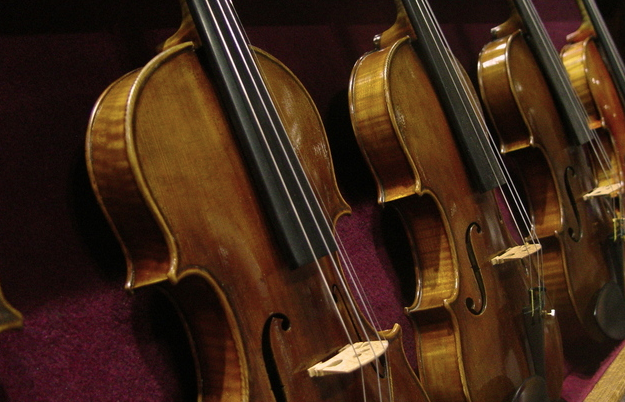Throughout the history of jazz there have been various artists that have greatly influenced the direction of the music. We can feel the still-unfolding impact of these masters on the jazz aesthetic even though many of them are no longer with us.
What do jazz artists as diverse as Bill Evans, Lester Young, Michael Brecker, Louis Armstrong, Elvin Jones, Clifford Brown, and John Coltrane all have in common? They all have a sound and conception about improvising, about playing their instruments, that (at one point in history, at least) has been highly imitated.
Of course there are many others, from Charlie Parker, Scott LaFaro, Freddie Hubbard, all the way up to Mark Turner (widely imitated by young, up and coming tenor saxophonists these days). It’s not unusual for people to want to imitate those artists that inspire them. As the cliche goes, “Imitation is the sincerest form of flattery.”
We often feel compelled to try to create the same magic our heros have created. But there is something sadly ironic when we do this through imitation. You see, there is also another thing that all these above mentioned great musicians have in common: the sound of surprise. In a word, spontaneity.
The more we try to imitate them, the farther we get from the magic that drew us to them in the first place.
The compelling expressive abilities that all these iconic musicians have do not simply lie in how great their sound is, nor how beautifully melodic they negotiate the chord changes of a standard song. These are things that could be reduced to a “style”, something that could be reproduced by somebody else. The thing that really draws us to these great artists is how stunningly personal, clear, immediate and alive their self expression is.
What we’re really witnessing when we listen to the great recordings of these masters is self-discovery. We’re witnessing the artist discovering the unfolding of their ideas and passions. It’s not only surprising and thrilling to us as listeners, but to the artists as well: the excitement of possibilities yet unexplored, the uncertainty of the process, the sound of spontaneity. That’s the magic.
This spontaneity stays fluid, yielding and expanding for their entire creative lives. It’s what makes them (what we deem) geniuses.
These artists rarely, if ever, aim for what might be called a “style.” They simply stay present with the possibility of exploring and manipulating the variables of their medium to express themselves. The moment they aim for a style, their spontaneity would be largely compromised, and they would lose the magic that reaches so deeply into us.
Yet this is precisely what happens with far too many aspiring jazz artists. It’s often not difficult at all to tell who’s been listening too much to whom when you go to many jazz performances.
I’ve been playing music enough years to see these trends of imitation as they change from one artist to the next. When I first started playing the tenor saxophone (in the mid 1970’s) it was nearly impossible to hear any aspiring tenor saxophonist under the age of 30 who wasn’t trying to play like John Coltrane.
Then it was everybody sounding like Michael Brecker (though still many trying to sound like Cotrane) in the 80’s and 90’s. Now (as I mentioned above) it’s many young tenor players trying to sound like Mark Turner (or other young tenorists who sound similar to him).
And it’s always the same outcome: the magic of John Coltrane, the magic of Michael Brecker, the magic of Mark Turner, all become reduced to a style. Something that can be imitated and codified. Something that hardens instead of staying fluid and dynamic.
Creativity in music, to me, is a series of problems that are to be solved. The artist feels something that is outside of reach because it’s never really been expressed yet. He or she works with the elements, see’s what works and what doesn’t, to bring their feelings, their imagination to life. There is, by design, a considerable amount of struggle here. It is through this struggle that the beauty emerges. Without it, there is never really a personal expression.
The great improvisers in jazz have paid this price to find their beauty, to find their voice. That is what thrills you when you hear them. The specifics of what they do (the things you might call their “style”) are almost incidental to this.
If you imitate them, you completely miss to point. As you steal their solutions, you rob yourself of the opportunity to solve your own aesthetic problems (and find the truth and beauty of your own expressive voice). The very best you can be is a flattering imitation of your heros. In my opinion that doesn’t honor them. It exploits them.
If you really want to honor your heros, perhaps you should do as they did on a much broader level. You should sit down with your problems, with your love and passion, with your visions, with your imagination and find a way to study and practice to find your own voice.
Maybe you should not spend the majority of your listening time scrutinizing your favorite artists. Instead, broaden your listening experience (as many of the great innovators in jazz have also done) to find not what (or whom) to imitate, but what touches you on the deepest level.
Have confidence in your own artistic vision and ideas. Trust yourself as to what is beautiful. Do so without asking why. Let yourself stay open, curious, passionate and disciplined. Let yourself stay spontaneously you at all times. To paraphrase the great Duke Ellington, “I’d rather listen to a musician that’s a number 1 version of himself than a number 2 version of somebody else.”
I would too, no matter how great the musician being imitated is.
